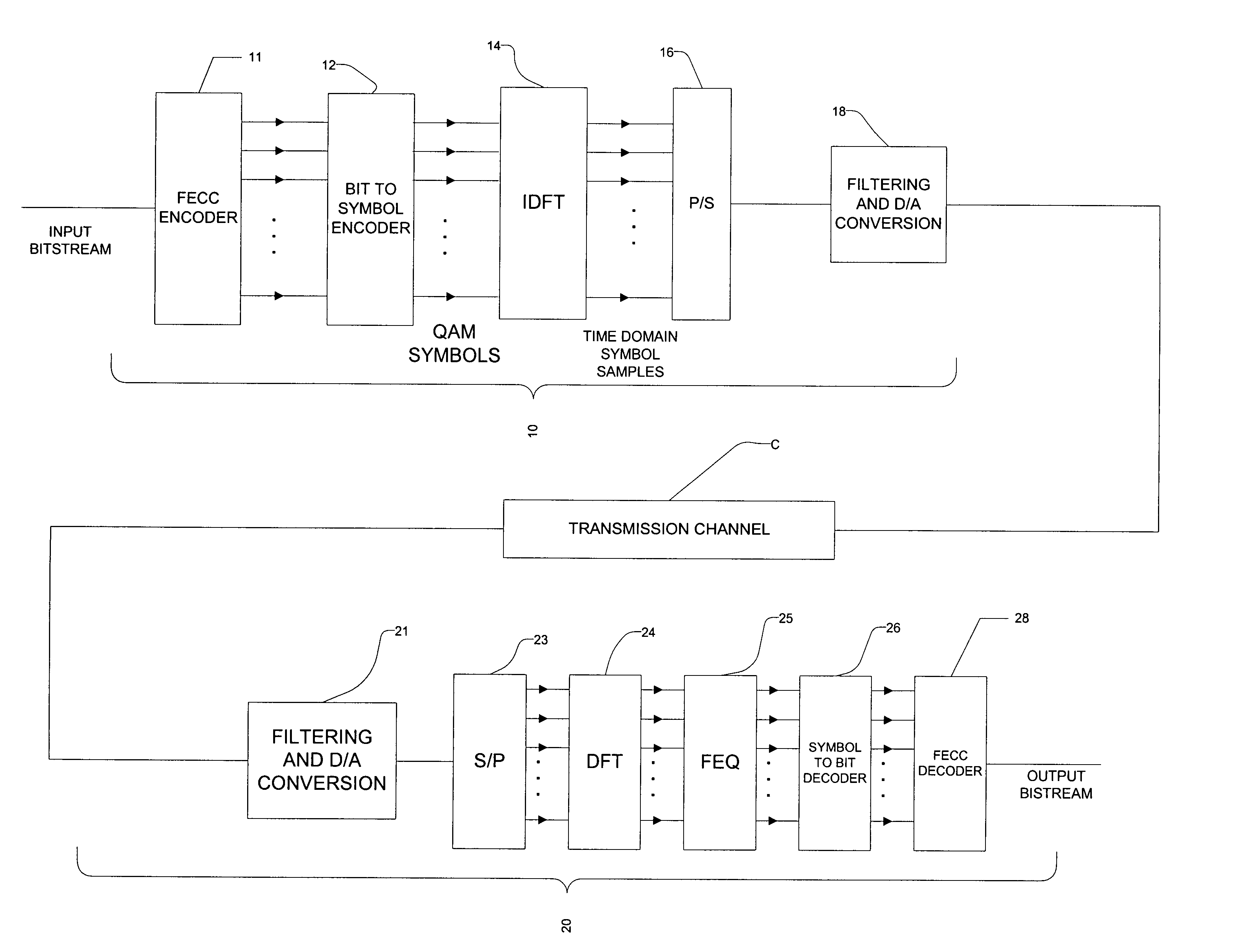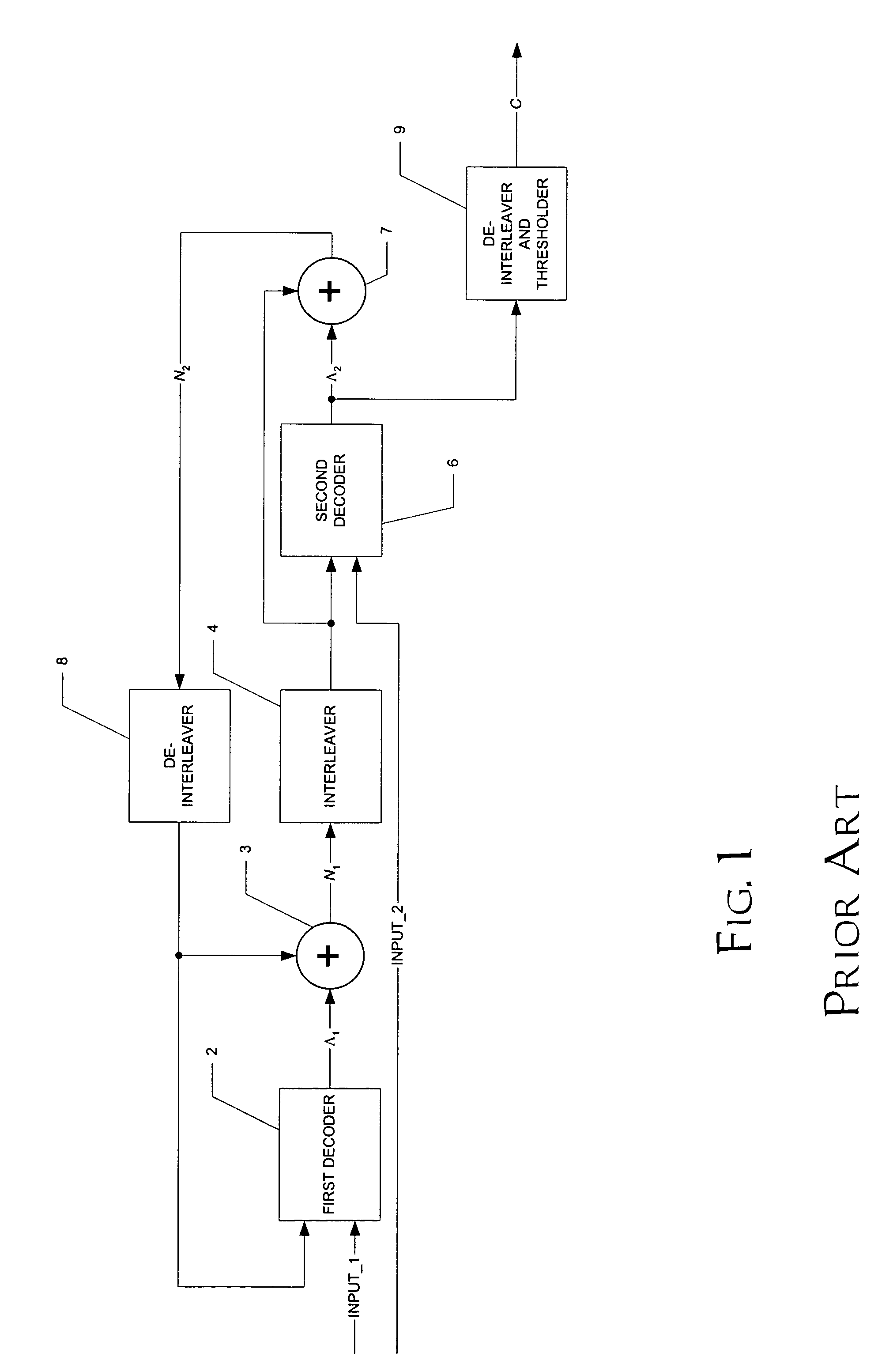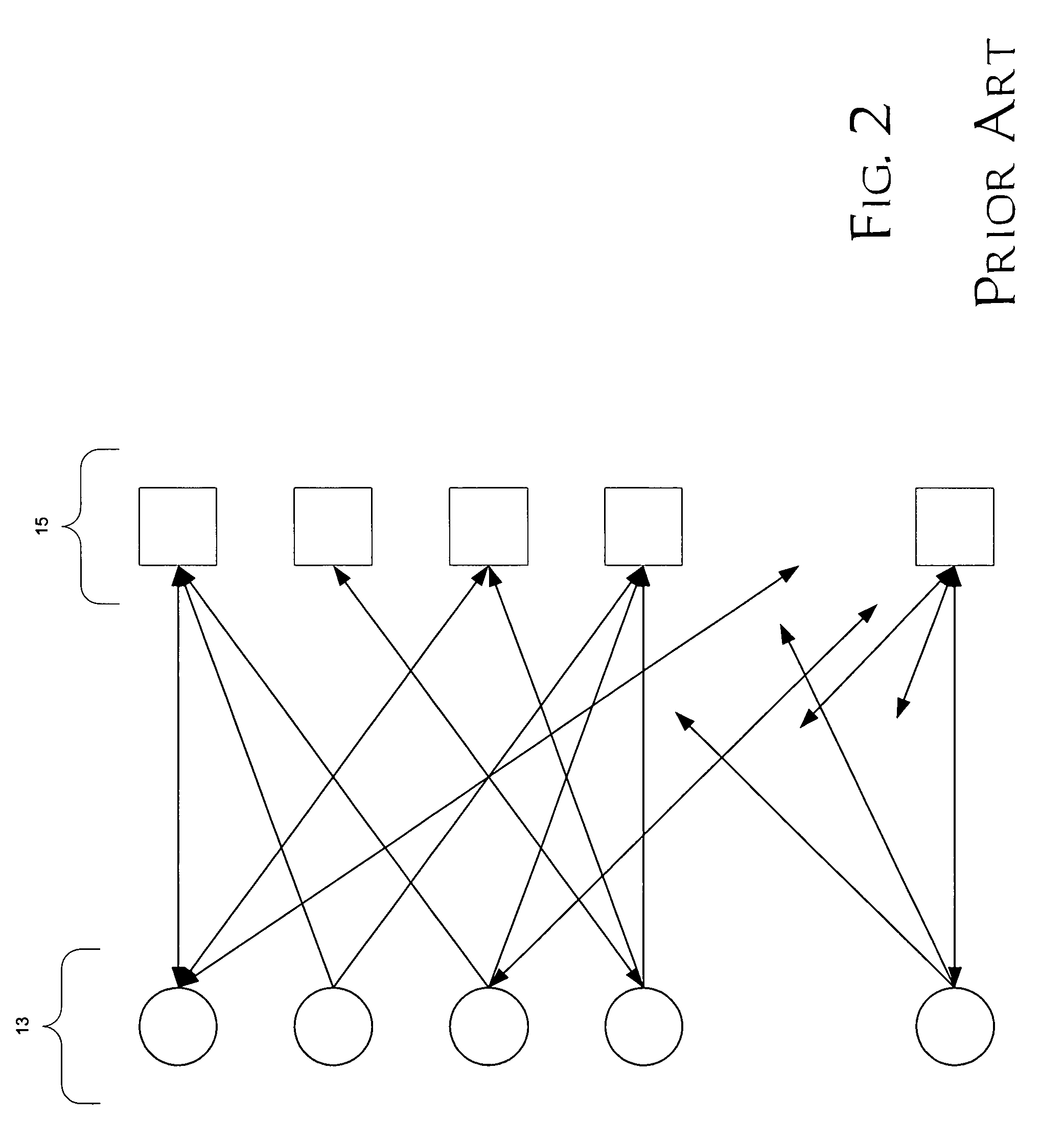Accelerating convergence in an iterative decoder
a decoder and iterative technology, applied in the field of digital data communication, can solve the problems of not necessarily correcting every error, ignoring the likelihood of data communication error, and affecting the quality of data communication, so as to achieve significant ease of trade-offs between delay and complexity
- Summary
- Abstract
- Description
- Claims
- Application Information
AI Technical Summary
Benefits of technology
Problems solved by technology
Method used
Image
Examples
Embodiment Construction
[0033] The present invention will be described in connection with its preferred embodiment, namely as implemented into digital circuitry in a communications receiver, such as a wireless network adapter according to the IEEE 802.11a wireless standard in which the binary convolutional code prescribed by that standard is replaced by a turbo code or LDPC code. However, as will be apparent to those skilled in the art, this invention will be beneficial in a wide range of applications, indeed in any application in which received coded information is to be decoded. Examples of such applications include wireless telephone handsets, broadband modulator / demodulators (“modems”), network elements such as routers and bridges in optical and wired networks, and even including data transfer systems such as disk drive controllers within a computer or workstation. Accordingly, it is to be understood that the following description is provided by way of example only, and is not intended to limit the tru...
PUM
 Login to View More
Login to View More Abstract
Description
Claims
Application Information
 Login to View More
Login to View More - R&D
- Intellectual Property
- Life Sciences
- Materials
- Tech Scout
- Unparalleled Data Quality
- Higher Quality Content
- 60% Fewer Hallucinations
Browse by: Latest US Patents, China's latest patents, Technical Efficacy Thesaurus, Application Domain, Technology Topic, Popular Technical Reports.
© 2025 PatSnap. All rights reserved.Legal|Privacy policy|Modern Slavery Act Transparency Statement|Sitemap|About US| Contact US: help@patsnap.com



